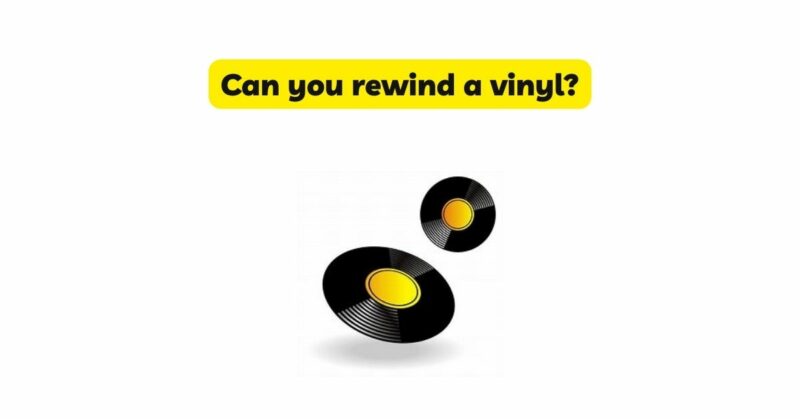Vinyl records have long been cherished for their analog charm and the unique listening experience they provide. However, there are common misconceptions surrounding certain aspects of vinyl playback. One such myth is the ability to rewind a vinyl record. In this article, we will delve into the world of vinyl playback and explore why rewinding a vinyl record is not possible. We will explain the structure of vinyl records, the mechanics of a turntable, and why attempting to rewind a vinyl record can lead to potential damage. By debunking this myth, we aim to provide clarity and help listeners navigate the world of vinyl with accuracy and understanding.
I. The Anatomy of a Vinyl Record
- Grooves and Spiraling Pattern: Vinyl records contain grooves that form a continuous spiraling pattern. These grooves are created during the record mastering process and hold the audio information that is reproduced when played.
- Direction of Playback: Vinyl records are designed to be played in a specific direction. The grooves are cut in a counterclockwise direction, and the stylus, or needle, follows this spiral path as it tracks the grooves.
II. How a Turntable Works
- Turntable Components: A turntable consists of various components, including a platter, tonearm, cartridge, and stylus. The platter spins the record, while the tonearm holds the cartridge and stylus, allowing them to track the grooves.
- Forward Movement: When a vinyl record is played, the platter rotates in a clockwise direction, moving the stylus from the outer edge of the record toward the center. This movement allows the stylus to follow the grooves and reproduce the recorded audio.
III. Why You Cannot Rewind a Vinyl Record
- Unidirectional Playback: Vinyl records are designed for unidirectional playback. Unlike cassette tapes or digital media, where rewinding is possible, the spiral grooves on a vinyl record are not designed for reverse playback.
- Physical Limitations: The structure of the grooves and the mechanics of the turntable make it technically challenging, if not impossible, to rewind a vinyl record. Attempting to manually spin the platter backward or move the stylus in the opposite direction can damage the delicate grooves and compromise the audio quality.
- Risk of Damage: Vinyl records are delicate and susceptible to damage. The stylus’s delicate tip, which tracks the grooves, is designed to move in one direction. Reversing this movement can cause the stylus to skip, jump, or even get stuck, potentially damaging the record or the stylus itself.
IV. Proper Handling and Care
- Track Skipping: If you wish to listen to a particular section of a vinyl record again, it is recommended to lift the stylus and gently place it back at the desired starting point. However, note that repeated tracking over the same section can cause wear and tear on the record and degrade audio quality.
- Cueing and Indexing: Many turntables have cueing mechanisms that allow you to lift and lower the tonearm with precision. Utilizing these features helps you navigate to specific tracks or sections of a vinyl record without the need for rewinding.
- Digital Alternatives: In the digital age, there are various tools and platforms available that offer digital music playback and convenient navigation. Digital music files can be easily rewound, fast-forwarded, or skipped to specific sections, providing a more flexible playback experience.
Conclusion
While the allure of vinyl records lies in their nostalgic appeal and the unique analog sound they offer, it is essential to understand their limitations. The myth of rewinding a vinyl record stems from a misunderstanding of the mechanics involved in vinyl playback. Vinyl records are meant to be played in a specific direction, and attempting to rewind them can lead to potential damage. By embracing proper handling techniques, utilizing cueing mechanisms, and exploring digital alternatives, listeners can fully enjoy their vinyl collection without the need for rewinding. Let us appreciate vinyl records for what they are—a testament to the rich history of music and a medium that deserves our care and respect.


